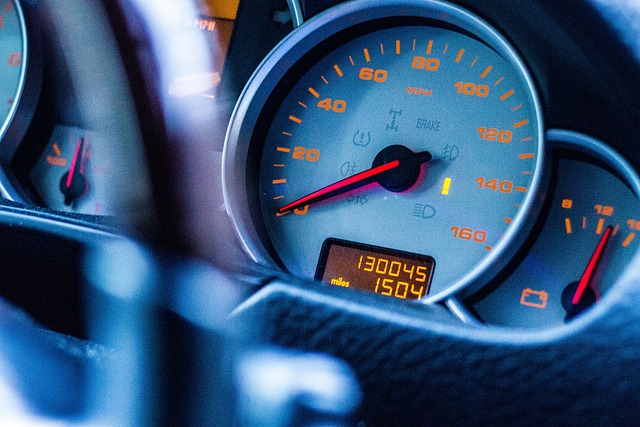High-Resolution Lung CT (HRLCT) is a revolutionary non-invasive imaging method that offers detailed insights into lung structures, making it crucial for diagnosing and monitoring respiratory conditions like COPD, interstitial lung diseases, and early cancer signs. HRLCT's superior spatial resolution detects subtle abnormalities missed by standard CT scans, visualizing tiny air spaces, thin bronchial walls, and small blood vessels. This technology aids in tracking disorder progression, assessing treatment response, and contributes to personalized medicine, ultimately enhancing healthcare decisions and patient outcomes. Advanced computational techniques and AI algorithms further improve diagnostic accuracy and speed, paving the way for tailored respiratory care.
Non-invasive imaging techniques have revolutionized the diagnosis and management of respiratory disorders, offering detailed insights without the risks associated with invasive methods. This article explores cutting-edge approaches, focusing on the transformative power of high-resolution lung CT (HRCT). We delve into the advantages, applications, and real-world impact of these techniques in diagnosing conditions like COPD and asthma. Furthermore, we peek into future prospects, highlighting ongoing advancements that promise even more precise and effective respiratory imaging.
High-Resolution Lung CT: Unveiling Detailed Respiratory Insights
High-Resolution Lung CT (HRLCT) is a powerful non-invasive imaging technique that offers detailed insights into the intricate structures of the lungs, making it an invaluable tool for diagnosing and monitoring respiratory disorders. This advanced scan provides superior spatial resolution, allowing radiologists to detect subtle abnormalities that might be missed by conventional CT scans. With its ability to visualize tiny air spaces, thin bronchial walls, and small blood vessels, HRLCT reveals a rich tapestry of lung architecture, enabling precise diagnosis of conditions like chronic obstructive pulmonary disease (COPD), interstitial lung diseases, and even early signs of cancer.
The benefits of HRLCT extend beyond its diagnostic accuracy. This technique can also help in tracking the progression of respiratory disorders over time, monitoring response to treatment, and identifying areas of inflammation or scarring. By providing such detailed information, HRLCT plays a pivotal role in personalized medicine, empowering healthcare professionals to make informed decisions and ultimately improving patient outcomes.
Advantages and Applications of Non-Invasive Imaging Techniques
Non-invasive imaging techniques offer significant advantages in diagnosing and monitoring respiratory disorders, providing detailed insights without subjecting patients to invasive procedures. These methods include advanced technologies like high-resolution lung CT (HRCT), which produces incredibly sharp images of the lungs, enabling radiologists to detect subtle abnormalities that may be missed by traditional X-rays. HRCT is particularly useful for evaluating conditions such as chronic obstructive pulmonary disease (COPD), idiopathic pulmonary fibrosis, and interstitial lung diseases, where early detection and accurate assessment are crucial for effective treatment planning.
Moreover, non-invasive imaging allows for longitudinal monitoring of patient progress, helping physicians track the progression of respiratory disorders and assess the effectiveness of treatments over time. This is especially beneficial in clinical trials and research settings, as it enables scientists to gather valuable data without causing discomfort or risk to participants. With their ability to provide detailed anatomic information, non-invasive imaging techniques are game-changers in respiratory medicine, fostering better patient care and outcomes.
Common Respiratory Disorders: How They're Diagnosed Non-Invasively
Respiratory disorders are a prevalent health concern, affecting millions worldwide. Conditions such as chronic obstructive pulmonary disease (COPD), asthma, and pneumonia often present with non-specific symptoms, making accurate diagnosis challenging. Fortunately, advancements in non-invasive imaging techniques have significantly improved the way we diagnose these conditions. High-resolution lung CT (HRCT) has emerged as a powerful tool in this regard.
HRCT provides detailed images of the lungs, allowing healthcare professionals to visualize and quantify abnormalities associated with respiratory disorders. Unlike traditional chest X-rays, HRCT offers much higher spatial resolution, enabling the detection of subtle changes in lung structure, such as air trapping, emphysema, or small airway disease. This level of detail aids in differentiating between various respiratory conditions and guiding personalized treatment plans.
Future Prospects: Advancements in Non-Invasive Respiratory Imaging
The future of non-invasive respiratory imaging looks promising, with continuous advancements pushing the boundaries of what is possible. High-resolution lung CT (HRCT) has emerged as a game-changer in this domain, offering unprecedented detail and clarity of lung structures. This technology enables healthcare professionals to detect subtle abnormalities and early signs of respiratory disorders, leading to more effective treatment strategies.
Further innovations are expected from advanced computational techniques, combining HRCT with artificial intelligence algorithms. These AI-driven systems can analyze vast amounts of data, enhancing diagnostic accuracy and speed. The integration of machine learning ensures that imaging results are interpreted with greater precision, opening doors for personalized medicine approaches in respiratory care.
Non-invasive imaging techniques, particularly High-Resolution Lung CT, have revolutionized the diagnosis and management of respiratory disorders. By providing detailed insights into lung structures, these advanced methods offer numerous advantages over invasive alternatives. From detecting subtle abnormalities in COPD and asthma to monitoring disease progression, non-invasive imaging is transforming clinical practice. Looking ahead, ongoing advancements promise even better resolution, enhanced accuracy, and broader accessibility, ensuring improved patient outcomes and a brighter future for respiratory care.
